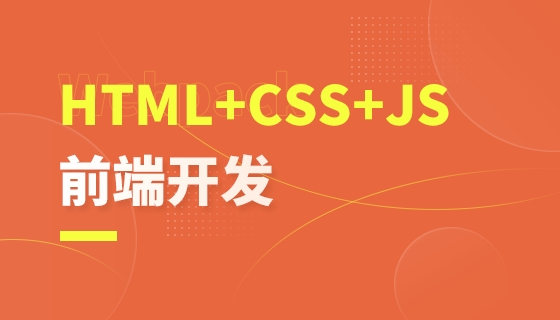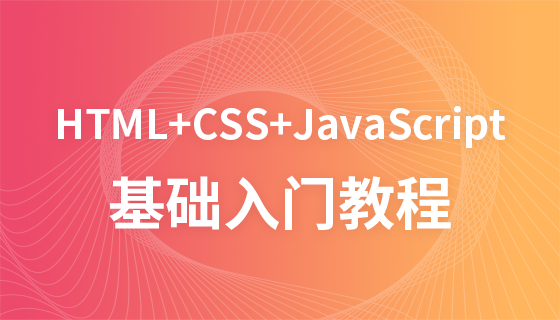
在使用go语言的`go/parser`和`go/ast`包解析源代码时,开发者可能会遇到无法直接通过`ast.typespec.doc`获取结构体类型注释的问题。本文深入探讨了go ast中类型声明(`ast.gendecl`)与类型规范(`ast.typespec`)之间的注释关联机制,并提供了通过检查`ast.gendecl`来正确提取这些注释的解决方案,同时建议在实际应用中优先考虑使用更高层的`go/doc`包来简化文档处理。
Go语言提供了强大的工具链,其中go/parser和go/ast包允许开发者对Go源代码进行词法分析、语法分析并构建抽象语法树(AST)。这些工具是进行代码分析、静态检查、自动化重构以及生成文档等任务的基础。go/parser负责将源代码解析为AST,而go/ast则定义了AST节点的结构,供开发者遍历和操作。
在使用go/parser解析包含结构体类型定义的Go文件时,开发者可能会发现一个令人困惑的现象:虽然函数(ast.FuncDecl)和结构体字段(ast.Field)的文档注释可以通过其Doc字段轻松获取,但对于直接定义在文件顶层的结构体类型(ast.TypeSpec),其紧邻的文档注释却常常无法通过TypeSpec.Doc字段直接访问到。
考虑以下Go代码示例:
package main
import (
"fmt"
"go/ast"
"go/parser"
"go/token"
)
// FirstType docs
type FirstType struct {
// FirstMember docs
FirstMember string
}
// SecondType docs
type SecondType struct {
// SecondMember docs
SecondMember string
}
// Main docs
func main() {
fset := token.NewFileSet() // positions are relative to fset
// 解析当前目录下的Go文件,并包含注释
d, err := parser.ParseDir(fset, "./", nil, parser.ParseComments)
if err != nil {
fmt.Println(err)
return
}
for _, pkg := range d {
ast.Inspect(pkg, func(n ast.Node) bool {
switch x := n.(type) {
case *ast.FuncDecl:
// 打印函数声明及其文档注释
if x.Doc != nil {
fmt.Printf("%s:\tFuncDecl %s\t%s\n", fset.Position(n.Pos()), x.Name, x.Doc.Text())
} else {
fmt.Printf("%s:\tFuncDecl %s\t<no doc>\n", fset.Position(n.Pos()), x.Name)
}
case *ast.TypeSpec:
// 打印类型规范及其文档注释(此时可能为空)
if x.Doc != nil {
fmt.Printf("%s:\tTypeSpec %s\t%s\n", fset.Position(n.Pos()), x.Name, x.Doc.Text())
} else {
fmt.Printf("%s:\tTypeSpec %s\t<no doc>\n", fset.Position(n.Pos()), x.Name)
}
case *ast.Field:
// 打印结构体字段及其文档注释
if x.Doc != nil {
fmt.Printf("%s:\tField %s\t%s\n", fset.Position(n.Pos()), x.Names, x.Doc.Text())
} else {
fmt.Printf("%s:\tField %s\t<no doc>\n", fset.Position(n.Pos()), x.Names)
}
}
return true
})
}
}运行上述代码,会发现FirstType docs和SecondType docs这两条注释并没有通过TypeSpec.Doc被打印出来。这表明它们并未直接关联到ast.TypeSpec节点。
立即学习“go语言免费学习笔记(深入)”;
Go语言的AST设计中,类型声明(type)、变量声明(var)和常量声明(const)都被统一封装在ast.GenDecl(通用声明)节点中。ast.GenDecl有一个Doc字段,用于存储紧接在type、var或const关键字之前的注释。
关键在于,当一个GenDecl节点只包含一个TypeSpec时(例如,type MyType struct {...}),该TypeSpec的文档注释(即紧跟在type关键字前的注释)实际上是附加到其父GenDecl上的,而不是TypeSpec自身。这与go/doc包内部处理文档的机制相符,go/doc在找不到TypeSpec.Doc时会回溯到GenDecl.Doc。
要正确获取结构体类型注释,我们需要在AST遍历过程中同时检查*ast.GenDecl节点。通过访问GenDecl.Doc,我们可以捕获到那些“丢失”的结构体类型注释。
以下是修改后的AST遍历逻辑,增加了对*ast.GenDecl的处理:
package main
import (
"fmt"
"go/ast"
"go/parser"
"go/token"
)
// FirstType docs
type FirstType struct {
// FirstMember docs
FirstMember string
}
// SecondType docs
type SecondType struct {
// SecondMember docs
SecondMember string
}
// Main docs
func main() {
fset := token.NewFileSet() // positions are relative to fset
// 解析当前目录下的Go文件,并包含注释
d, err := parser.ParseDir(fset, "./", nil, parser.ParseComments)
if err != nil {
fmt.Println(err)
return
}
for _, pkg := range d {
ast.Inspect(pkg, func(n ast.Node) bool {
switch x := n.(type) {
case *ast.FuncDecl:
// 打印函数声明及其文档注释
if x.Doc != nil {
fmt.Printf("%s:\tFuncDecl %s\t%s\n", fset.Position(n.Pos()), x.Name, x.Doc.Text())
} else {
fmt.Printf("%s:\tFuncDecl %s\t<no doc>\n", fset.Position(n.Pos()), x.Name)
}
case *ast.TypeSpec:
// 打印类型规范及其文档注释(此时可能为空)
if x.Doc != nil {
fmt.Printf("%s:\tTypeSpec %s\t%s\n", fset.Position(n.Pos()), x.Name, x.Doc.Text())
} else {
fmt.Printf("%s:\tTypeSpec %s\t<no doc>\n", fset.Position(n.Pos()), x.Name)
}
case *ast.Field:
// 打印结构体字段及其文档注释
if x.Doc != nil {
fmt.Printf("%s:\tField %s\t%s\n", fset.Position(n.Pos()), x.Names, x.Doc.Text())
} else {
fmt.Printf("%s:\tField %s\t<no doc>\n", fset.Position(n.Pos()), x.Names)
}
case *ast.GenDecl:
// 打印通用声明及其文档注释
if x.Doc != nil {
fmt.Printf("%s:\tGenDecl (%s)\t%s\n", fset.Position(n.Pos()), x.Tok, x.Doc.Text())
} else {
fmt.Printf("%s:\tGenDecl (%s)\t<no doc>\n", fset.Position(n.Pos()), x.Tok)
}
}
return true
})
}
}将上述代码保存为main.go并运行 go run main.go,您将看到类似以下的输出(具体行号可能因Go版本或文件内容略有不同):
main.go:3:1: GenDecl (PACKAGE) <no doc> main.go:11:1: GenDecl (TYPE) FirstType docs main.go:11:6: TypeSpec FirstType <no doc> main.go:13:2: Field [FirstMember] FirstMember docs main.go:17:1: GenDecl (TYPE) SecondType docs main.go:17:6: TypeSpec SecondType <no doc> main.go:19:2: Field [SecondMember] SecondMember docs main.go:23:1: FuncDecl main Main docs ... (其他AST节点,如循环内的字段等)
从输出中可以看出,FirstType docs和SecondType docs现在通过GenDecl (TYPE)节点被成功捕获。这证实了当单个类型声明时,注释是附着在GenDecl上的。
为了更好地理解GenDecl和TypeSpec注释的关联,考虑Go语言中允许的分组类型声明:
// This documents FirstType and SecondType together
type (
// FirstType docs
FirstType struct {
// FirstMember docs
FirstMember string
}
// SecondType docs
SecondType struct {
// SecondMember docs
SecondMember string
}
)在这种分组声明中,如果您再次运行上述带有GenDecl处理逻辑的代码,将会观察到不同的输出:
main.go:3:1: GenDecl (PACKAGE) <no doc> main.go:11:1: GenDecl (TYPE) This documents FirstType and SecondType together main.go:13:2: TypeSpec FirstType FirstType docs main.go:15:3: Field [FirstMember] FirstMember docs main.go:19:2: TypeSpec SecondType SecondType docs main.go:21:3: Field [SecondMember] SecondMember docs main.go:26:1: FuncDecl main Main docs ...
现在,FirstType docs和SecondType docs这两条注释直接附加到了各自的TypeSpec.Doc上。而This documents FirstType and SecondType together这条注释则附加到了外层的GenDecl.Doc上。
这进一步证明了Go AST对注释的归属规则:紧邻声明关键字的注释归属于该声明(GenDecl),而当GenDecl包含多个Spec时,每个Spec自身前的注释则归属于该Spec。这种设计确保了无论是单行声明还是分组声明,所有相关的文档注释都能被正确地捕获。
尽管直接操作go/ast可以解决注释提取问题,但其复杂性较高,需要开发者深入理解AST结构和Go语言的注释归属规则。特别是,go/doc
以上就是解析Go语言AST:正确提取结构体文档注释的实践指南的详细内容,更多请关注php中文网其它相关文章!

每个人都需要一台速度更快、更稳定的 PC。随着时间的推移,垃圾文件、旧注册表数据和不必要的后台进程会占用资源并降低性能。幸运的是,许多工具可以让 Windows 保持平稳运行。




Copyright 2014-2025 https://www.php.cn/ All Rights Reserved | php.cn | 湘ICP备2023035733号